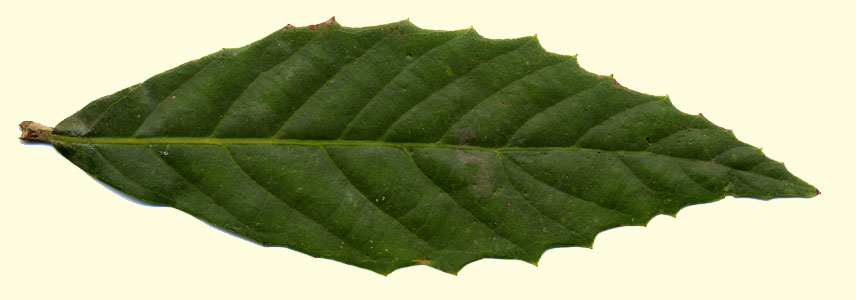| Quercus lanata | |
| Author | Sm. 1819 Cycl. 29: 27 |
| Synonyms | banga
(or banja)Buch.-Ham. ex D.Don 1825 dealbata Wall. 1828 nom. inval. incana Roxb. 1814 nom. nudum, not Bartr. 1791 lanata var. incana Wenzig 1886 lanuginosa D.Don 1825 leucotrichophora A.Camus 1935 (A. Camus : n° 134) nepaulensis Desf. 1829 oblongata D.Don 1825 |
| Local names | Ban
oak ; woolly oak ; tong mai li ; |
| Range | India,
Myanmar, China, Nepal, Vietnam, Borneo, North Pakistan; 1300-3000 m; introduced
in Europe in 1818; |
| Growth habit | 4-18
m tall (may reach 30 m); twisting trunk; |
| Leaves | 10-22
x 3-9 cm; evergreen; oval oblong, twice or three times as long as wide;
glabrous; stiff; rough above; rusty white tomentose beneath, sometimes
only along veins; margin entire or slightly toothed in apical half; apex
obtuse, more or less acuminate; base rounded or broadly conical; 14-17
parallel vein pairs; petiole 6-25 mm, grey brown tomentose, becoming glabrous;
|
| Flowers | pistillate
inflorescences 4-14 cm long, in June-July; |
| Fruits | acorn
1.1-1.8 cm long, 0.9-1.2 cm wide; ellipsoid-ovoid, mucronate, apex acute;
glabrous; singly or paired; enclosed 1/3 to 1/2 by cup; cup sessile, 1
cm in diameter; with small, triangular, appressed scales; maturing in
1 or 2 years; |
|
Bark, twigs and |
bark thick, brown-ash grey, lenticellate, peeling into thin plates; young shoots densely pubescent, becoming partially glabrous; |
| Hardiness zone, habitat | not
quite hardy in England; thrives well in West France; all types of soils;
|
| Miscellaneous |
-- A. Camus : n° 135; |
| Subspecies and varieties |
-- var. eriocarpa
A.Camus 1935 -- var. leiocarpa
A.Camus 1935 -- Q. leucotrichophora A.Camus 1935 (A.
Camus n° 134) |
| Pictures |
|






